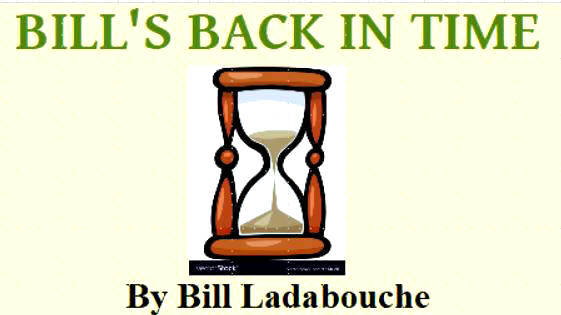
BILL'S [Somewhat] WEEKLY COLUMN/BLOG PAGE

THE PURE GLORY AND HIGH LIVING OF THE EARLY DAYS
Today, even the poorest and most shoestring of racing teams usually have at
least an enclosed trailer to get into before, during, or after races. Most teams
have generators and often take care of their own tire mounting and so forth. If
you are from a headlining team, your girlfriends, mothers, etc. often can sashay
over to the track's VIP tower and watch everything in comfort.
Then there's the high style of early auto car racing in the 1950's. Vip tower ? Hell, they were lucky if the announcer and scorers got int any kind of structure above track level, let alone anyone else. The high mucky – mucks were the ones who came to the track with their car on a TRAILER ! [Can you imagine ? Talk about puttin' on airs !].

Otto Graham Photo
Hauling the track car to the
track used to be so easy ! Below -
Now it's pure hell. [Sometimes the air conditioner turns off].
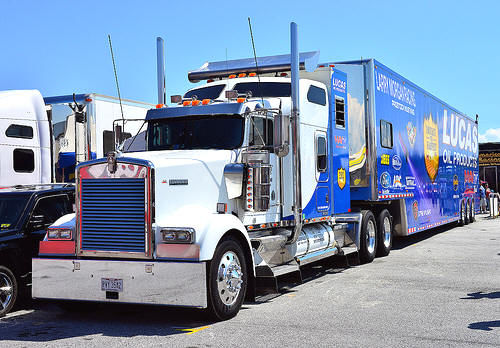
Flickr.com
Race cars sure as hell did not feature power steering, air conditioned helmets, head restraints, and such. Ya got a seat belt – stop yer bitchin'. Those who came with a pickup truck had everything they could in the back, hopefully leaving enough room for extra crew and “the old lady” to ride in there, too.
I recall a photo caption from around 1963 concerning pit activity at Daytona. It said: “Living it up in the big leagues”. It showed crewmen stopping to have a lunch of Vienna sausages and baked beans – cold out of the cans. It also showed driver uniforms hanging on the fence to dry after they tried to spray on their own flame retardant.
Courtesy of Jack Dubrul
Many a car owner and his mechanics prepared their cars under a tree in somebody's backyard while that somebody's wife hung out clothes and glared in disapproval. Guys with their own gas station [or access to one] were living large. So, preparing the race car, getting it and the gang to the track, working on it, and simply racing it were perhaps enjoyed b y 99% of the participants but quite far from easy.
Lew Boyd, in his wonderful Photo of the Day feature on the Coastal 181 site probably has the photo that shows this better than any other. When one thinks of the Indianapolis 500 [particularly in the days before the total ascendance of NASCAR] one thinks of the greatest spectacle in motor racing – with all the trappings. Yet, In this photo, here shows the winner of the race in one of the glory years and you fail to see the glamour.

IMC Photo
Exhausted beyond belief, Bill
Vuchovich certainly doesn't look like he's
on top of the world, having won the greatest spectacle in motor
racing – the 1954 Indy 500. Below – Vuky didn't look much better
after his 1953 win either. Both years were exceptionally hot.
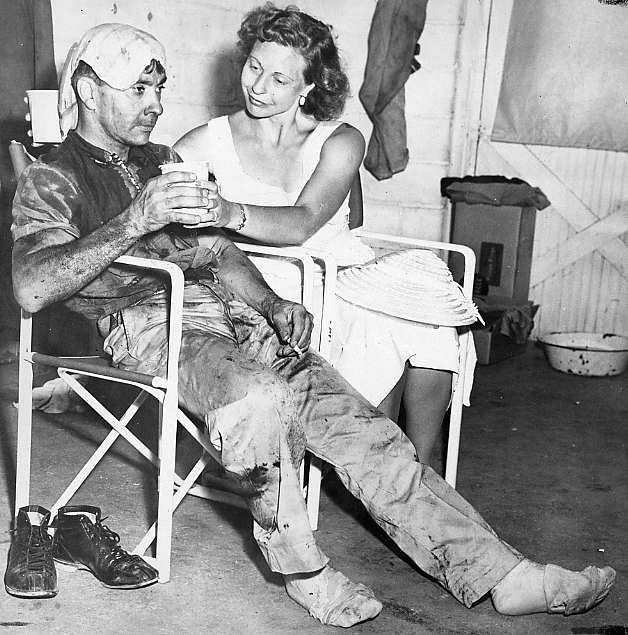
Pinterest
The shot shows Bill Vukovich huddled on a work bench in his garage on Gasoline Alley, exhausted to the nth degree. Barefooted, wearing an undershirt, head in his hands, he is absolutely spent. Dehydrated, filthy, and probably too tired to speak, people were leaving him alone. [Probably he smelled so bad that wasn't hard to do].
Today, an Indy driver, having driven a far easier car, would have retired to his luxury motor coach for hydration and perhaps a massage before meeting with tons of media. Vukovich, I believe, was killed later driving something dangerous like a sprint car. There were marvelously talented drivers in that era [likely 1950's] whose only recourse besides Indy was barnstorming on terrible fairgrounds tracks, wrestling powerful, cranky sprint cars. I doubt Bill would feel anywhere near as beat up as he did after 500 miles on the brick yard.
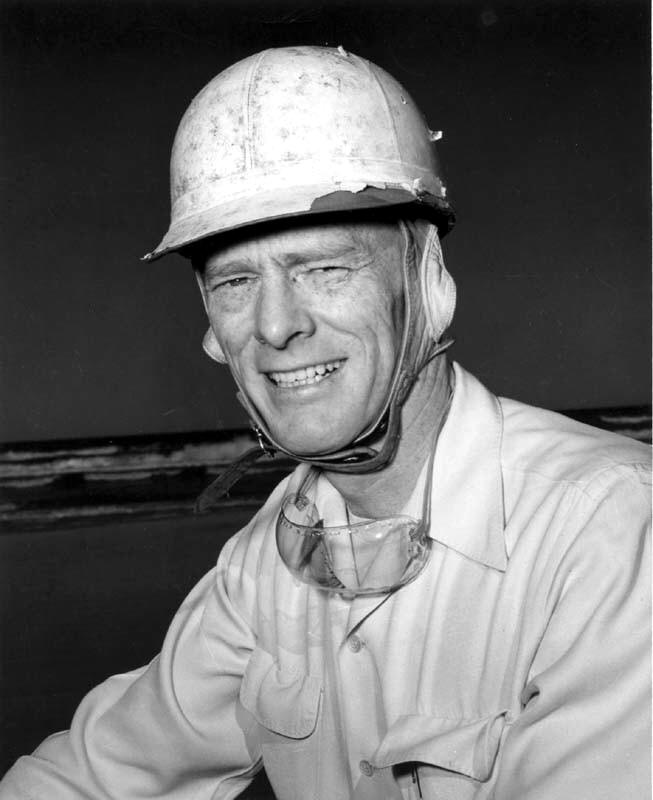
Allmyblog.com
Red Byron poses for a portait.
The old style helmet gives away
the fact this wasn't even in the 1950's. He was one of NASCAR's
earliest big star attractions. Below – Byron, with the Raymond Parks
22, wrenched by Red Vogt.

American Automove.com
Another, somewhat similar situation portrays early NASCAR driver Red Byron after a race on a red clay track somewhere deep in Dixie. It was that era's version of a super team: Red Byron, driver; Raymond Parks, owner; and Red Vogt as mechanic. Byron had just won a major race [for that period in NASCAR's history], and there he sat, caked in red clay dust, clutching a World War II surplus canteen with water. He always wore eye protection that looked, for all the world, like welder's goggles.
This was the era in the late 1940's when NASCAR had not yet quite gotten to the American passenger cars of the Grand Nationals. Byron's full – bodied 1940 Ford coupe was essentially like almost any moonshine tanker of the day. I am not sure if it even had a roll cage. Having just watched the nonsense that was the 2019 Daytona 500 crash fest, I came to wonder, how different is that for the major race winner than for poor, dusty Red back in 1948 ?

Decades of Racing.net
Oh, the glories of a NASCAR
victory lane in 1948 ! Caked with
red clay dust, winner Red Byron sits, clutching a WWII surplus
canteen with some lukewarm water. Below – Buddy Shuman with
his 1948 NASCAR entry. Look at all that safety equipment !
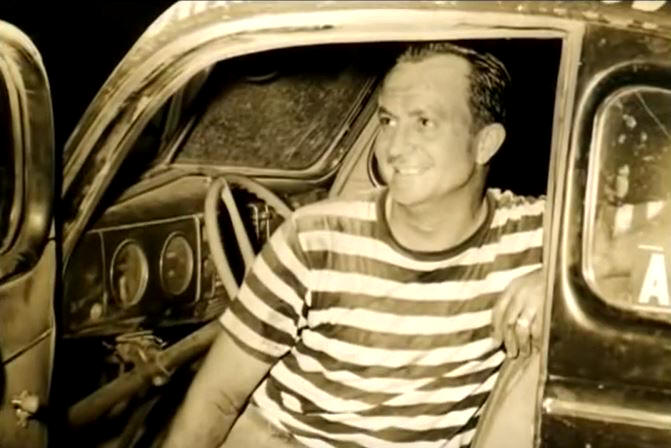
Old School NASCAR Site
Some of the drivers from that time, like Byron and others, kind of faded into the background as NASCAR got going in full gear. They were eminently good enough – just not up for the subsequent hoopla. Others, like Herb Thomas, the Flock brothers, and more went on all the way up to [but mostly not including] the Daytona superspeedway era. If he was alive today, you gotta wonder what would go through Red Byron's mind watching all the fanfare and molly coddling done to today's teenage driver after an air conditioned, power steering and spotter assisted race. Red would have never allowed Gatorade to be poured on him; he would have wanted to DRINK it.
Even after things got a little better in NASCAR than what Byron put uo with, it still wasn't all hearts and flowers. The Grand National guys used to have to go on a Northern Tour every year, wrestling powerful but not always great handling American passenger cars around tracks not suited for them. Of course, the guys in the earlier NASCAR “short track” division had been putting up with that for years.
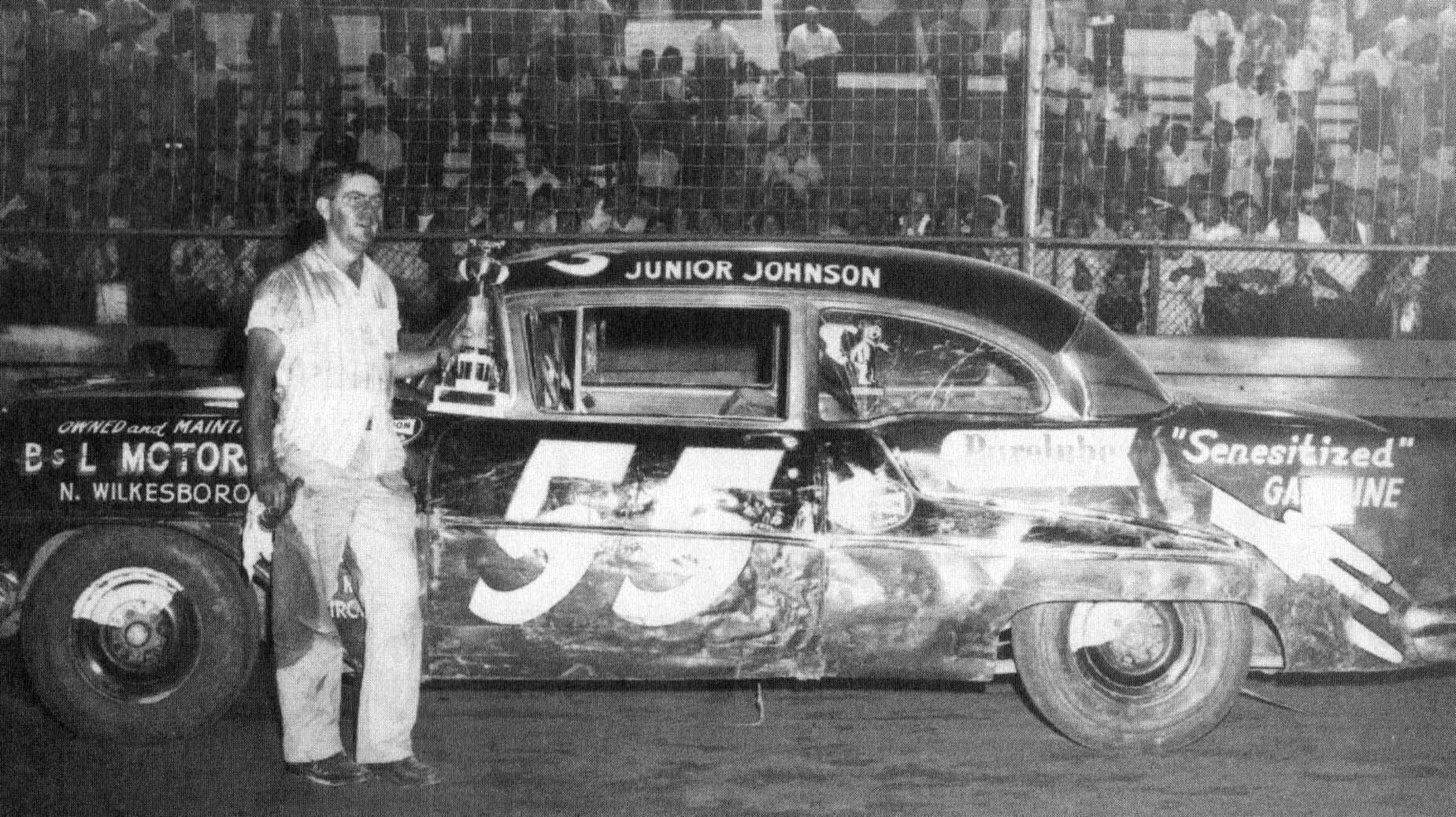
Ed Feuz
Collection Fonda History Book
Junior Johnson with a glamorous
win at Fonda, NY in 1955.
Below – The irregular Fonda track had no ne turn the same as another.
And, if you missed, you could end up in the canal.
Historic Aerials.com
In this one photo from the book on the history of Fonda Speedway, it shows Junior Johnson, having won a 1950's race there, in “victory lane” [which at Fonda was standing out on the track in front of the crowd.] The large, hulking North Carolinian was not wearing a driver's suit, and he was nearly as dirty as Byron had been in the other photo. Clutching a grease rag in one hand and a modest trophy in the other, he was filthy and tired. I guarantee he'd be toiling away with the crew afte to lead up and go to a motel [hopefully with a good shower].
It couldn't have been a particularly fun race, given the large '55 Oldsmobile did not even had racing tires. Those early to mid 1950's NASCAR Grand National cars had very little modification in the driver's compartment either: scant cages, a few gauges, and sometimes an extra fancy rear view mirror was about all he could expect. Fonda Speedway was, in the earlier days, a very well prepared dirt track; but, even with that considered, it would dry out and then the drivers contended with grit and dust. Couple with that the fact that the idiosyncratic track did not have one turn the same as another. Fun, if you were just visiting.
Frank Hart Family
Family members of one of the Vermont drivers sits the
only
place they can in the infield at a large Canadian
horse track
that was featuring stock car s in the 1950's. Looks
comfy.
Getting there, particularly for the common racer, was not very convenient. Unless you were somebody like Frankie Schneider, you just didn't venture far from home. Most of the cars [even Grand Nationals] were flat towed. Really fortunate locals might have a pickup truck to do the hauling. Rare, was the trailer in those days – mostly with guys who ran a garage or were welders.
Photos I have of some of the drivers from the northern Vermont area in the early 1950's bear this out. One shot shows a late '40's/early '50's GMC pickup in the infield of a fairgrounds or some sort of horse track. It appears that members of the family including an older man and two women were reduced to sitting out the afternoon perched in the back of the pickup. Real comfy.
Owen Family Photo via Cliff Owen
Mrs. Gordy Owen and Mrs. Ralph Bushey have the
seat of honor
as their husbands flat tow the #31 to some distant race, maybe in Quebec.
Another set of
shots shows Gordy Owen, a top Vermont driver in the 1950's, on the road with his
wife, owner Ralph Bushey [and sometimes even Mrs. Ralph]. It looks like – at
least sometimes, the women rode it out in the back [and the Owen/Bushey combo
made trips as far away as the Montreal, Quebec area tracks. There just wasn't
the number of places en route then where one could stop to eat or anything else
for that matter.
I would venture to say that, despite the conditions I have mentioned, most of those people would not trade racing today for what they had back then; it just had more soul.
Please email me if you have any photos to lend me or information and corrections I could benefit from. Please do not submit anything you are not willing to allow me to use on my website - and thanks. Email is: wladabou@comcast.net . For those who still don’t like computers - my regular address is: Bill Ladabouche, 23 York Street,Swanton, Vermont 05488.
AS ALWAYS, DON’T FORGET TO CHECK OUT THE
REST OF MY WEBSITE
www.catamountstadium.com
Return to the Main Page
Return to the Main News Page
Return to the All Links Page
Return to the Weekly Blog Links Page